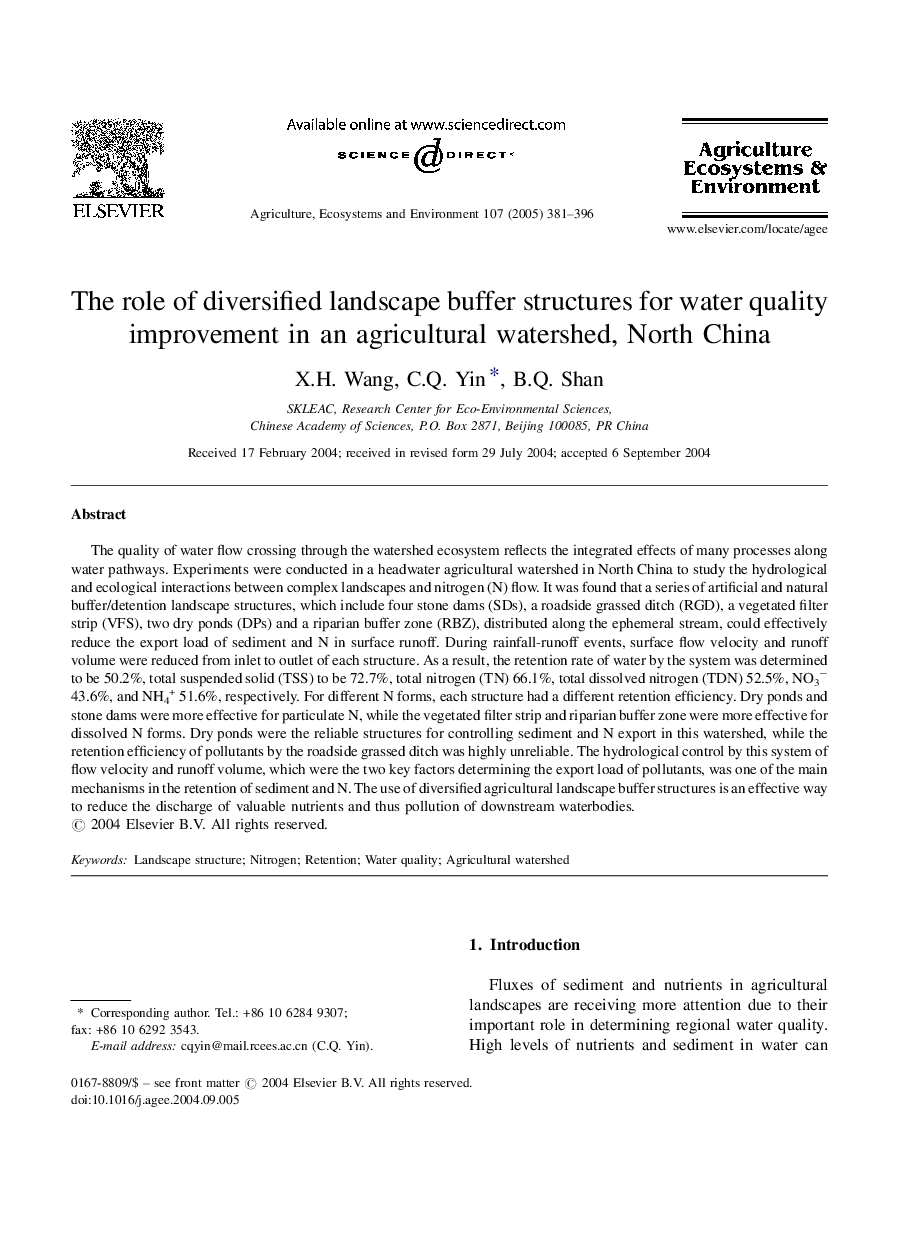| کد مقاله | کد نشریه | سال انتشار | مقاله انگلیسی | نسخه تمام متن |
|---|---|---|---|---|
| 8970959 | 1104011 | 2005 | 16 صفحه PDF | دانلود رایگان |
عنوان انگلیسی مقاله ISI
The role of diversified landscape buffer structures for water quality improvement in an agricultural watershed, North China
دانلود مقاله + سفارش ترجمه
دانلود مقاله ISI انگلیسی
رایگان برای ایرانیان
کلمات کلیدی
موضوعات مرتبط
علوم زیستی و بیوفناوری
علوم کشاورزی و بیولوژیک
علوم زراعت و اصلاح نباتات
پیش نمایش صفحه اول مقاله

چکیده انگلیسی
The quality of water flow crossing through the watershed ecosystem reflects the integrated effects of many processes along water pathways. Experiments were conducted in a headwater agricultural watershed in North China to study the hydrological and ecological interactions between complex landscapes and nitrogen (N) flow. It was found that a series of artificial and natural buffer/detention landscape structures, which include four stone dams (SDs), a roadside grassed ditch (RGD), a vegetated filter strip (VFS), two dry ponds (DPs) and a riparian buffer zone (RBZ), distributed along the ephemeral stream, could effectively reduce the export load of sediment and N in surface runoff. During rainfall-runoff events, surface flow velocity and runoff volume were reduced from inlet to outlet of each structure. As a result, the retention rate of water by the system was determined to be 50.2%, total suspended solid (TSS) to be 72.7%, total nitrogen (TN) 66.1%, total dissolved nitrogen (TDN) 52.5%, NO3â 43.6%, and NH4+ 51.6%, respectively. For different N forms, each structure had a different retention efficiency. Dry ponds and stone dams were more effective for particulate N, while the vegetated filter strip and riparian buffer zone were more effective for dissolved N forms. Dry ponds were the reliable structures for controlling sediment and N export in this watershed, while the retention efficiency of pollutants by the roadside grassed ditch was highly unreliable. The hydrological control by this system of flow velocity and runoff volume, which were the two key factors determining the export load of pollutants, was one of the main mechanisms in the retention of sediment and N. The use of diversified agricultural landscape buffer structures is an effective way to reduce the discharge of valuable nutrients and thus pollution of downstream waterbodies.
ناشر
Database: Elsevier - ScienceDirect (ساینس دایرکت)
Journal: Agriculture, Ecosystems & Environment - Volume 107, Issue 4, 30 May 2005, Pages 381-396
Journal: Agriculture, Ecosystems & Environment - Volume 107, Issue 4, 30 May 2005, Pages 381-396
نویسندگان
X.H. Wang, C.Q. Yin, B.Q. Shan,